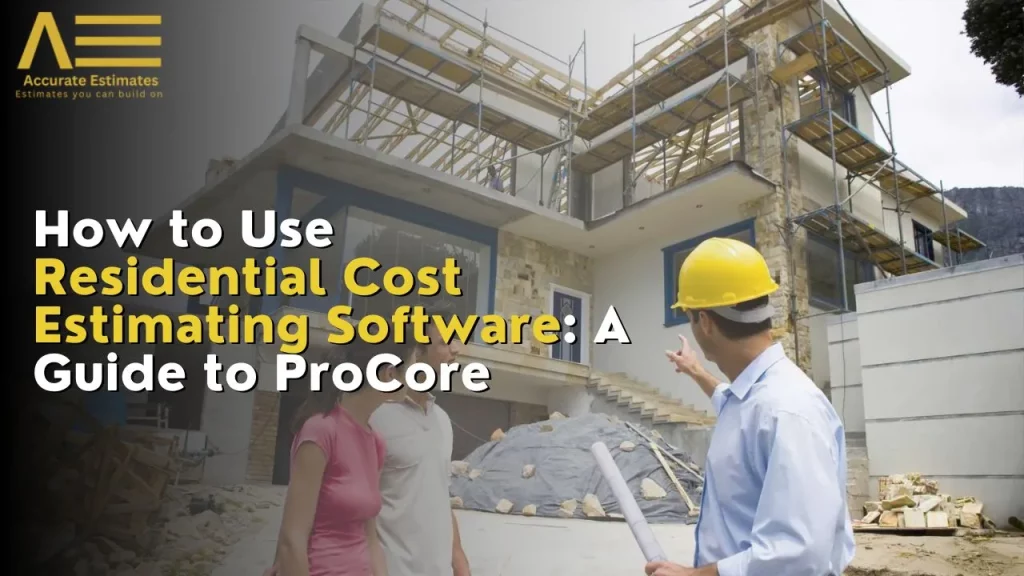How to Estimate the Cost of Building a New Home?

Building a new home is an exciting and significant undertaking. However, it requires careful planning and accurate cost estimation to ensure a successful project. In this article, we’ll guide you to estimate the cost of building a new home accurately. Whether you’re a homeowner taking on a DIY project or a professional contractor, these guidelines will help you create a reliable budget and bring your dream home to life.
Constructing a new home involves various aspects that must be considered to estimate the overall cost-effectively. By understanding the project scope, defining requirements, and setting clear goals, you lay the foundation for accurate estimation.
Understanding the Project Scope
Defining Requirements
Start with outlining the specific features and sizes you envision for your dream home. Consider the number of rooms, bathrooms, kitchen design, flooring options, and any additional amenities you desire.
Setting Goals
Establish realistic objectives for the project, including completion timelines and budget constraints. Clear goals will help you stay on track throughout the construction process.
Project management:
Explore how Residential Estimating Services are pivotal in ensuring project success by providing accurate cost assessments and invaluable insights. Learn more about the significance of precise estimates in optimizing project timelines and budgetary efficiency. Click here to delve into these services’ crucial role in residential project management.
Gathering Information
To make an informed decision, you must gather all details about the project.
Researching Local Regulations
Different regions have specific building codes and regulations. Thoroughly research these guidelines to ensure compliance, which can help you avoid costly delays and modifications later.
Consulting with Experts
Ask for advice from builders, architects, and other construction experts. Their expertise will provide valuable insights into estimating costs for various aspects of the project.
Estimating Materials and Labor
Obtain quotations from reputable suppliers and contractors to estimate the costs of materials and labor accurately. This step forms the basis of your budget.
Creating the Budget
Breaking Down Costs
Categorize expenses into groups such as foundation, framing, roofing, plumbing, electrical, and interior finishes. This breakdown will enable you to allocate resources more efficiently.
Including Contingency
Always include a contingency fund within your budget to cover unexpected expenses or price changes in the materials. Being prepared for unexpected costs will safeguard your project’s financial stability.
Utilizing Technology
Benefits of Estimating Software
Consider leveraging construction estimating software to streamline the process and improve accuracy. These tools efficiently manage and organize cost data, ensuring more precise estimates.
Working with 3D Models
Utilize 3D models to visualize the final structure and identify potential design flaws that might impact costs. This step allows you to make adjustments early in the planning phase, avoiding costly changes during construction.
Hiring a Professional Estimator
What to Look for in an Estimator
For complex projects, engaging a Professional Residential Estimator can enhance the accuracy of your cost estimates. Look for someone with experience, reliability, and a track record of delivering precise results.
Cost of Hiring an Estimator
While hiring an estimator adds to the overall cost, their expertise can potentially save you money by preventing costly mistakes and ensuring optimal resource allocation.
Managing the Project
Monitoring Expenses
Throughout the construction process, closely monitor expenses to ensure they align with the budget. Regular tracking allows for timely adjustments if necessary.
Dealing with Changes
Construction projects often encounter changes along the way. Assess the impact of modifications on the budget and schedule accordingly, avoiding cost overruns.
Cost to Build a House by States:

Avoiding Common Estimating Mistakes
Overlooking Hidden Costs
Be vigilant about hidden costs, such as permit fees, site preparation, or unforeseen repairs, that may not be immediately apparent during estimation.
Underestimating Timeframes
Avoid underestimating the time required for construction, as it may lead to additional expenses. Realistic timelines are essential for accurate budgeting.
Conclusion
Accurate estimation of the cost of building a new home is critical for a successful project. By understanding the project scope, gathering information, creating a detailed budget, and leveraging technology, you can improve the accuracy of your estimates. Hiring a professional estimator and taking care of the project properly will help to smoothen the construction process and help ensure that your new home is built to your specifications.
Common Questions about How to Estimate the Cost of Building a New Home?
Q: How can I estimate the cost of building a new home on my own?
A: To estimate costs independently, define your requirements, research local regulations, and obtain quotations from suppliers and contractors.
Q: Why is it important to include a contingency fund in the budget?
A: A contingency fund accounts for unexpected expenses and ensures you have funds available to address any unforeseen issues.
Q: What is new home construction cost per square foot?
A: The cost of building a new home per square foot can vary depending on a number of factors, including the location, the size of the home, the materials used, and the level of finish. However, in general, the average cost to build a house per square foot in the United States is between $100 and $155.
Q: Should I hire a professional estimator for my home construction project?
A: If your project is complex or beyond your expertise, hiring a professional estimator can provide more accurate cost estimates.
Q: How can I prevent common estimating mistakes?
A: Be vigilant about hidden costs and realistic about timeframes to avoid underestimating expenses and completion dates.
Q: What role does 3D modeling play in cost estimation?
A: 3D models help visualize the final structure and identify potential design flaws that may affect costs.
Q: How do I ensure my construction project stays within budget?
A: Regularly monitor expenses, make timely adjustments, and be prepared to handle changes that may impact the budget.
Q: What are the potential consequences of not complying with local building regulations?
A: Non-compliance can lead to costly delays, penalties, or even legal issues during the construction process.



